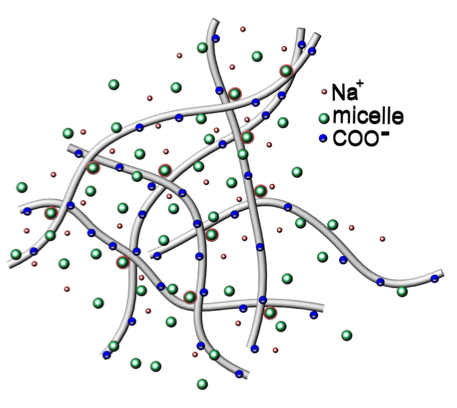
Cellulose nanofibrils (CNF) provide unique opportunities for rheology modification in complex fluids. Rheological measurements and dynamic light scattering are used to systematically explore CNF gelation with ionic and non-ionic surfactants.
Nawal Quennouz, Sara M. Hashmi, Hong Sung Choi, Jin Woong Kim, Chinedum O. Osuji
Cellulose nanofibrils CNF present unique opportunities for rheology modification in complex fluids. Here we systematically consider the effect of ionic and non-ionic surfactants on the rheology of dilute CNF suspensions. Neat suspensions are transparent yield-stress fluids which display strong shear thinning and power-law dependence of modulus on concentration, G’~c2.1. Surfactant addition below a critical mass concentration cc produces an increase in gel modulus with retention of optical clarity. Larger than critical concentrations induce significant fibril aggregation leading to losses of suspension stability and optical clarity, and to aggregate sedimentation. The critical concentration was lowest for a cationic surfactant (DTAB), cc~0.08%, while suspension stability was retained for non-ionic surfactants (Pluronics F68, TX100) at concentrations up to 8 %. The anionic surfactant SDS led to loss of stability at cc~1.6% whereas suspension stability was not compromised by anionic SLES up to 8%. Dynamic light scattering data are consistent with a scenario in which gel formation is driven by micelle-nanofibril bridging mediated by associative interactions of ethoxylated surfactant headgroups with the cellulose fibrils. This may explain the strong difference between the properties of SDS and SLES-modified suspensions. These results have implications for the use of CNF as a rheology modifier in surfactant-containing systems.